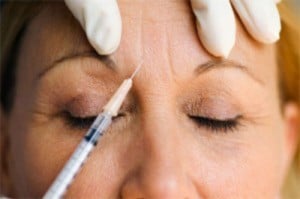Treat your hair loss with the help of a specialist in hair loss treatments.
Treat your hair loss with the help of a specialist in hair loss treatments.
Blog Article
Browsing Skin Cancer Cells Treatment: The Necessary Role of Mohs in Modern Dermatology Practices
Skin cancer, a challenging diagnosis, usually leaves clients grappling with many treatment options. As we check out the ins and outs of this procedure, one will appreciate its essential function in skin cancer cells treatment.
Comprehending Skin Cancer Cells: Types and Dangers
Skin cancer, a potentially lethal malady, is much more prevalent than lots of people realize. This condition, brought on by the unrestrained growth of irregular skin cells, primarily results from DNA damage due to exposure to the sunlight and ultraviolet (UV) light. There are 3 main sorts of skin cancer: Basal cell cancer, Squamous cell carcinoma, and Melanoma. While the previous two are less dangerous and make up the majority of identified instances, melanoma is the most hazardous. It makes up only about 1% of skin cancer cases however triggers the huge majority of skin cancer deaths - chemical peel. Threat factors include fair skin, background of sunburn, extreme sunlight direct exposure, living at high elevations or shut to the equator, having numerous moles, a household history of skin cancer cells, and deteriorated body immune system.
What Is Mohs Surgical treatment and Exactly How It's Changing Skin Cancer Cells Therapy
Despite the countless therapies currently available for skin cancer, Mohs surgical treatment stands out as a groundbreaking and extremely effective remedy. Called after Frederic E. Mohs, the medical professional who established the treatment, Mohs surgical treatment is a precise medical technique utilized to deal with skin cancer cells. During the procedure, slim layers of cancer-containing skin are gradually gotten rid of and examined until only cancer-free tissue continues to be. This approach allows the specialist to confirm that all cancer cells have actually been eliminated at the time of surgical procedure. This level of accuracy, integrated with the capacity to save as much healthy and balanced cells as feasible, is transforming skin cancer treatment. As an outcome, Mohs surgery has actually become a cornerstone of modern-day dermatology techniques.
The Benefits of Mohs Surgical Procedure Over Traditional Skin Cancer Therapies
Building on the ingenious nature of Mohs surgical procedure, it's critical to consider its various advantages over standard skin cancer cells therapies. Unlike standard operating procedures, Mohs provides a greater cure price, typically getting to 99% for new treatments and 94% for persistent cancers cells. This precision is due to its distinct approach of gradually removing and checking out tissue layers till just cancer-free cells stay (mohs surgery). Furthermore, it decreases damages to healthy and balanced skin, leading to less scarring and boosted cosmetic end results. Mohs likewise offers instant outcomes, getting rid of the anxiety-ridden wait usual with various other methods. Lastly, it's cost-efficient, as the surgical treatment and microscopic exam take place concurrently, getting rid of the demand for added laboratory solutions. Therefore, Mohs stands for a significant advancement in dermatological techniques.
The Treatment of Mohs Surgical Treatment: What to Expect Throughout the Refine

Potential Side Effects and Post-Operative Care of Mohs Surgery
Going through Mohs surgery, like any other procedure, involves possible adverse effects that people ought to know. Typical side impacts include pain, bruising, and swelling at the surgery site. Nonetheless, these are normally short-term and manageable with over the counter pain medicine and Get More Information cold pack. In uncommon situations, individuals may experience infection, blood loss, or an allergy to the regional anesthetic. Post-operative treatment is essential to healing and reducing side results. This generally involves maintaining the wound clean and completely dry, taking recommended medicines, and avoiding arduous activities. Patients should additionally participate in all follow-up consultations for injury care and monitoring. In some cases, added therapies might be necessary to guarantee full removal of the malignant cells. Sticking to these post-operative care guidelines can considerably enhance recovery and results.
Final thought

Report this page